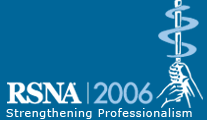
Abstract Archives of the RSNA, 2006
John M. Watkins MD, Presenter: Nothing to Disclose
David T Marshall MD, Abstract Co-Author: Nothing to Disclose
Debajyoti Sinha PhD, Abstract Co-Author: Nothing to Disclose
Joseph Malphus Jenrette MD, Abstract Co-Author: Nothing to Disclose
Describe toxicity, outcomes, and prognostic factors associated with HD-CRT in treatment of high grade CNS neoplasms.
Between 8/1998 and 12/2005, 60 patients underwent HD-CRT treatment planning to total dose >7000 cGy. Patient-, tumor-, and treatment-specific data were recorded and analyzed for predictors of survival
Median age at diagnosis was 52 years (range 14-82), 54% were male and 85% were ECOG performance status 0-1. Eighty-six percent of tumors were astrocytomas and 72% were glioblastomas (GBM; WHO grade IV astrocytomas). Pre-radiotherapy gross total resection was achieved in 55% of patients, while 28% underwent subtotal resection and 17% biopsy only.HD-CRT was planned to a median of 7800 cGy (range 7000-8000 cGy, n=52 planned to 7800), and 86% of patients completed the full prescribed course. Sixty-four percent of patients received chemotherapy; 75% of these were treated with temozolamide.Three patients experienced RTOG grade 3 acute CNS toxicity, while no patient experienced skin toxicity >grade 2. Thirty-two percent of patients required steroid increase after 20 Gy. No pathologically confirmed case of brain necrosis occurred, though it was suspected based upon clinical and/or radiographic findings in 5 patients.At a median survivor follow-up of 21 months (range 3-80 months), 72% of patients had died. Median survival for the population was 11 months (range 2-83), with 12.5% of patients experiencing tumor progression while on treatment. Of 49 patients who died or experienced tumor progression, 30 had imaging performed at the time of clinical deterioration. In these patients, 90% had radiographic evidence of in-field failure. Overall survival at 2, 3, and 5 years was 22%, 11%, and 6.5%, respectively. Specific to GBM, which constituted the majority of the population, median survival was 9 months (range 2-46) and overall survival at 2, 3, and 4 years was 9%, 3%, and 0%.Log-rank univariate analysis for predictors of survival was performed for the following variables: age, ECOG performance status, radiographic tumor size, extent of resection, chemotherapy, and steroid requirement. The results revealed that tumor grade 4 versus 3 (p=0.01) and use of non-temozolamide versus temozolamide chemotherapy (p<0.01) were significantly associated with worse outcome. When analyzed specifically for GBMs, administration of temozolamide versus no chemotherapy significantly improved survival (p=0.046).
HD-CRT for high-grade primary CNS neoplasms is safe but does not appear to confer a survival advantage, with in-field failures continuing to predominate recurrence. Higher tumor grade and non-temozolamide chemotherapy predicted for worse outcomes, while temozolamide provided a survival benefit in GBM patients.
Watkins, J,
Marshall, D,
Sinha, D,
Jenrette, J,
High-Dose Conformal Radiotherapy (HD-CRT) to 78 Gy for High Grade Primary CNS Neoplasms: Toxicity, Outcomes, and Prognostic Factors.. Radiological Society of North America 2006 Scientific Assembly and Annual Meeting, November 26 - December 1, 2006 ,Chicago IL.
http://archive.rsna.org/2006/8001057.html

